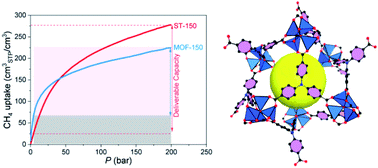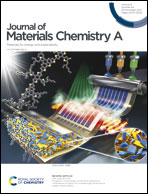Control over interpenetration for boosting methane storage capacity in metal–organic frameworks†
Abstract
Metal–organic frameworks (MOFs) have been recognized as prominent methane adsorbents for use in cleaner modes of transportation. Currently, ultrahigh methane deliverable capacity is required for use in heavy-duty vehicles and long-haul transportation under industrially and economically feasible working conditions. Herein, we show that control over interpenetration in MOFs can serve as a realistic strategy for boosting methane deliverable capacity without altering the underlying topology. Specifically, a new MOF, termed ST-150 (ST = ShanghaiTech University), is demonstrated to possess an high volumetric deliverable capacity of 244 cmSTP3 cm−3, which stands at a ∼70% improvement over its interpenetrated counterpart–MOF-150. Due to the control over interpenetration, ST-150's deliverable capacity surpasses that of an empty compressed natural gas tank by 20% at 298 K and 5.8–200 bar. Variable-temperature solid-state nuclear magnetic resonance (NMR) spectroscopy combined with molecular simulation of methane uptake reveals new insights into the importance of molecular dynamics and its impact on the accessible pore volume, and ultimately, deliverable capacity for on-board methane storage in MOF materials.



 Please wait while we load your content...
Please wait while we load your content...